Water reuse essential guide
Table of contents
- What is water reuse?
- Water reuse technologies
- Wastewater reuse for drinking water
- EPA guidelines for water reuse
Water Reuse: Our Essential Guide to Direct and Indirect Potable Reuse & Technologies
In recent years, the impacts of climate change have meant that temperatures have risen and water levels are falling. Droughts and heatwaves are forcing governments and water suppliers to bring in restrictions on our water use. Yet, the recent development in water reuse technology has opened the door for opportunities to augment water supply.
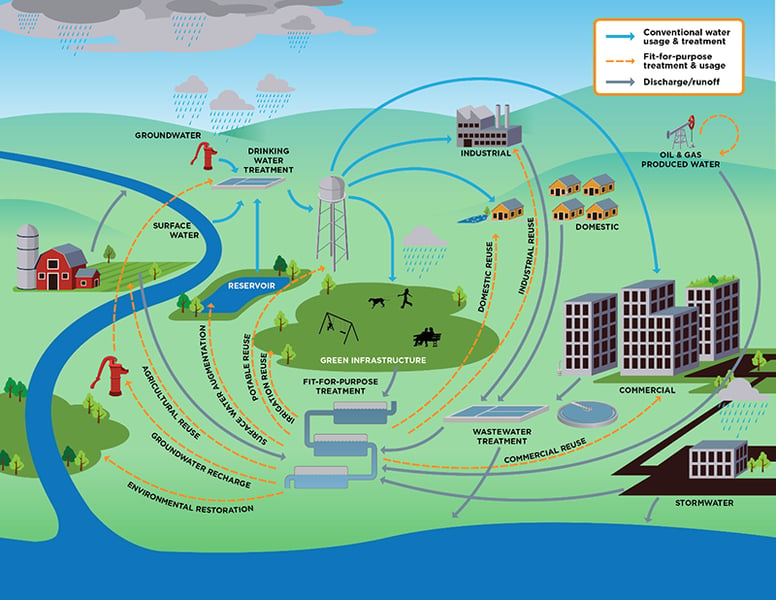
Image credit: EPA
Through the application and investment of water reuse technology, it is possible for communities around the globe to make their water go further. The idea of water reuse – to recycle wastewater - for agriculture, sanitation and even drinking water is not a new concept.
While the technology has developed and improved, public opinion on water reuse is still playing catch up. The following article is designed to provide an overview of water reuse processes – including direct and indirect potable reuse – as well as the technologies and guidelines.
What is water reuse?
In its simplest terms, water reuse is a process of treating wastewater by removing any pollutants, before either adding it back into a water source or sending directly to be consumed. Conventional municipal water systems take water from lakes or rivers and treat them to meet drinking water standards before it is released for public use.
In this comprehensive overview, we delve into the three key phases of wastewater treatment: primary, secondary, and tertiary. Each stage contributes uniquely to the overall purification process, addressing specific contaminants and enhancing the quality of treated water.
There are many benefits to water reuse, especially in small communities where it significantly increases the community's water supply during droughts. While almost all water is eventually reused in some form or another, there are two processes that have designed specifically for recycling wastewater to then be used for drinking water; Direct Potable Reuse (DPR) and Indirect Potable Reuse (IPR).

Image credit: AWRA
Direct potable reuse (DPR) involves adding treated wastewater directly to a municipal water supply without an environmental buffer. It offers several advantages:
1. Cost-effective
DPR systems typically appear in or nearby drinking water and wastewater treatment plants and, as a result, water only needs to be pumped a short distance. The close distance between the two means that is much cheaper for municipalities compared to IPR methods.
2. Financial savings
A study by the Australian Academy of Technical Science and Engineering found that a hypothetical DPR system costs $616 million, while an IPR system costs $1,287 million in setup. Running costs for DPR are $53 million per year, significantly lower than the $72 million for IPR.
3. Reduced carbon footprint
DPR systems minimize CO2 emissions due to the short pumping distance, making them environmentally friendly.
4. Water security
The proximity enhances water security, as DPR systems are less susceptible to external factors like earthquakes and floods.
However, drawbacks include the need for water quality checks and additional setup costs. Currently, only a few municipal DPR systems exist globally.
Public perception and lack of knowledge should also be taken into account, as the general idea of a DPR system being implemented in a local community’s water system can lead to public resistance and misunderstanding, if implemented poorly.
Indirect potable reuse (IPR) involves releasing treated wastewater into reservoirs for future drinking water use, reclaiming and treating it to meet standards.
There are a number of benefits to using an IPR system:
1. Environmental Purification
The nature of IPR is to add treated wastewater into an environmental system, such as a lake, river, or aquifer. As the treated wastewater is added to the larger body of water, it is diluted to allow for any remaining contaminants to be removed.
2. A known method
IPR is not new and has been introduced successfully around the globe. There a no adverse health impacts that have been reported as a result of an IPR system in communities that make use of it, leading to their popularity. Public backing – IPR systems have won public favour in recent years as more consumers get on board with the idea of having an IPR system compared to a DPR system, according to the study carried out by the ATSE.
Similar to DPR, IPR systems have drawbacks, being more expensive and requiring longer pumping distances. Criticisms include resource inefficiency, treating the same water twice, as noted in the ATSE report.
Despite greater public support than DPR, IPR hasn't fully won public approval. Challenges arise from general public opinion and knowledge regarding water reuse, presenting a significant hurdle for the process.
Water reuse technologies
There are several factors influencing the selection of water reuse technology, as highlighted in the National Academies Press report. These factors encompass the application of water reuse, quality objectives for reclaimed water, characteristics of the source water, compatibility, process flexibility, and operation and maintenance considerations.
Additionally, the decision-making process is influenced by factors such as energy and chemical requirements, staffing needs, residual disposal options, and environmental constraints.
Understanding and carefully considering these elements are crucial for making informed choices in implementing water reuse technology.
Now, let's explore some of the popular water reuse technologies, as compiled by Water World:
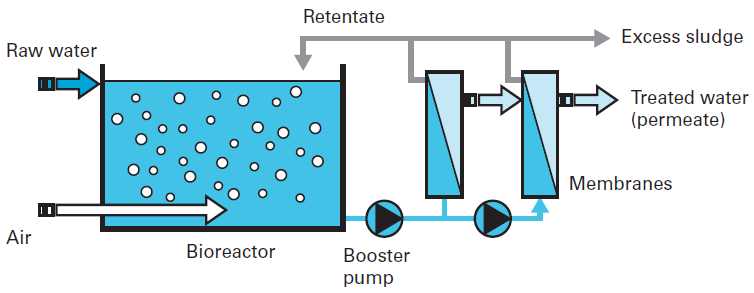
Image credit: SUEZ
Membrane bioreactor – Membrane bioreactor – By combining biological, secondary, and tertiary wastewater treatment in one step, this technology can treat wastewater to drinking water standards. It also represents an established means of enabling the reuse of wastewater.
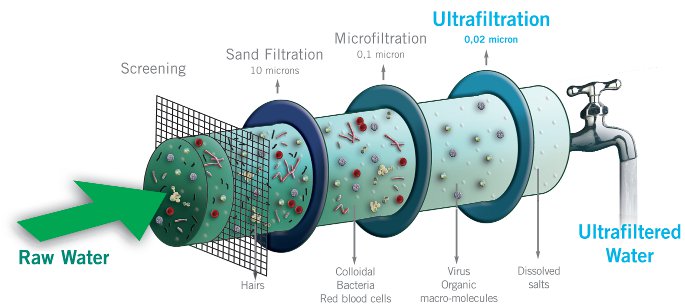
Image credit: MyEarthWater&Sky
Ultrafiltration – Used for drinking water treatment, ultrafiltration systems designed to operate downstream on a secondary wastewater treatment process, where no further biological treatment is required but where high-quality water is the objective. One of the benefits of this system is that it features a small footprint that can be placed practically anywhere.
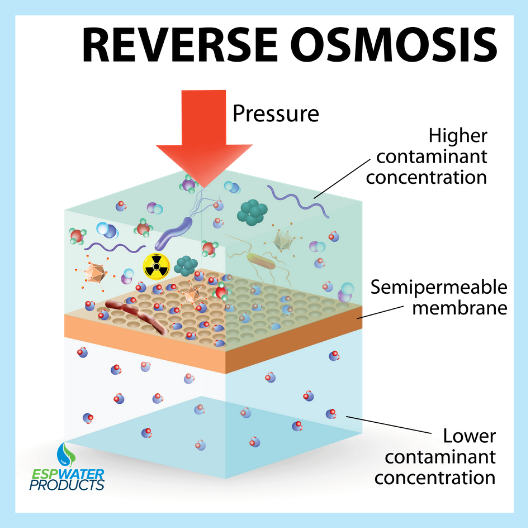
Image credit: ESP Water Products
Reverse Osmosis (RO) – RO systems are used after the wastewater has been pre-treated to remove any organics, solids, and metals that may oxidise the membranes. Pre-treated water is sent to an RO for desalination for drinking water, water reuse, or as part of a system to produce ultrapure water. This technology is selected for indirect and direct potable water reuse applications because it provides an excellent barrier to bacteria and pathogens and can remove pesticides.
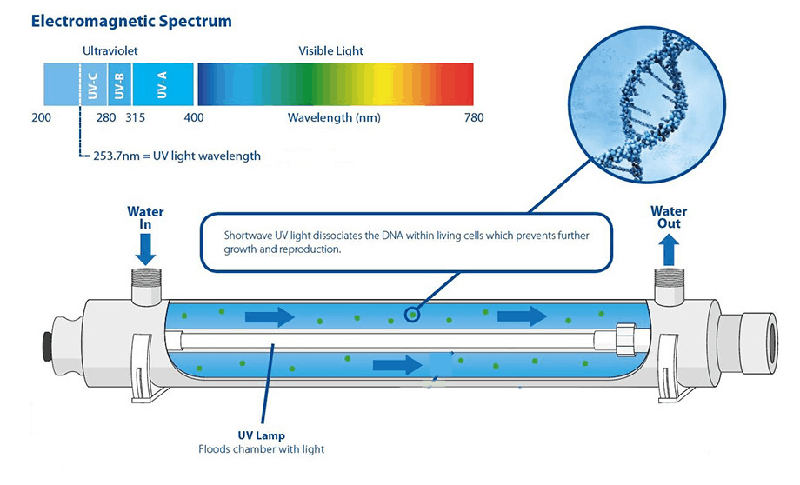
Image credit: Alfaa UV
Disinfection Technologies (UV / Ozone / Advanced Oxidation) – These technologies are used as a final step in water reuse applications to remove any remaining organics.

Image credit: Waterions
Electrodialysis Reversal (EDR) – This is an electrically driven membrane process that uses an electric voltage to draw ions through membranes. Because of the polarity reversal design, EDR is a self-cleaning, durable membrane system ideal for turbid wastewater. EDR technology achieves the highest water recovery for water-scarce areas.

Image credit: Condorchem Evitech
Thermal Evaporation and Crystallization Systems – These systems are essential for achieving zero liquid discharge and recycling the remaining wastewater. With any wastewater reuse system, there are often a few remaining wastewater streams too saturated for conventional physical/chemical and membrane technology. Evaporation and crystallisation reduce these last difficult wastewaters to dry solids, allowing for cost-effective disposal and squeezing out the last bit of clean water for maximum recycle and reuse.
Wastewater reuse for drinking water
Wastewater reuse, particularly for augmenting drinking water supplies, is a key attraction. Both Direct Potable Reuse (DPR) and Indirect Potable Reuse (IPR) are effective methods, although the treated water is commonly utilized for agricultural and sanitation purposes.
Current objections to wastewater reuse, as outlined in the National Research Council's study, centre around concerns about the adequacy of drinking water standards for ensuring safety across all water sources.
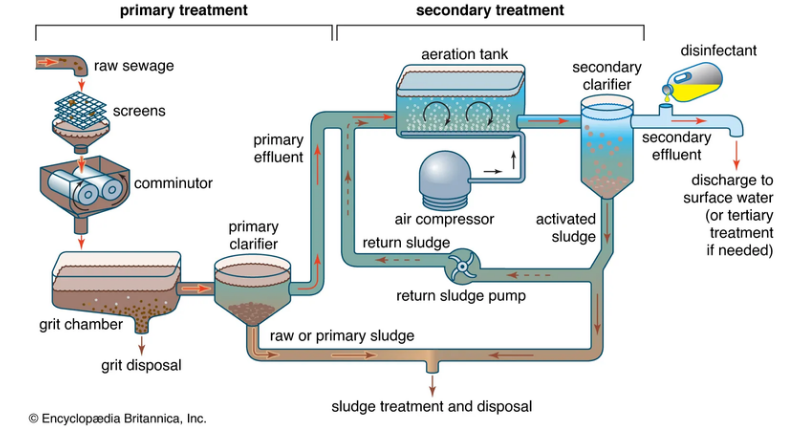
Image credit: Science Direct
To meet regional or national standards, any wastewater considered for drinking water must adhere to specified guidelines. However, globally, there are limited instances of wastewater being used directly for drinking water.
In the United States, San Diego participated in a 2013 IPR study, treating wastewater from Las Vegas to become the city's main drinking water source. Despite successful projects like these, the primary challenge remains public resistance based on concerns about safety and cleanliness even after treatment.
EPA guidelines for water reuse
In 2017, the U.S. Environmental Protection Agency (EPA) updated its water reuse guidelines, building on the 2012 version, which itself drew from the 2004 guidelines. The 2017 water reuse compendium and the 2012 EPA water reuse guidelines can be found here.
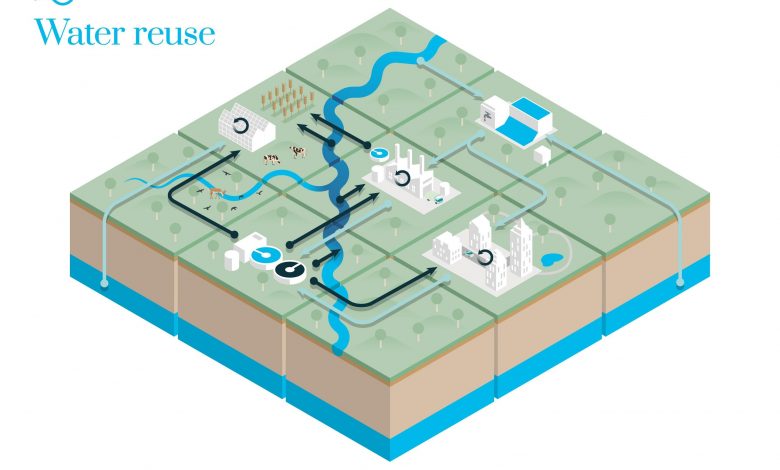
Image credit: KWR
References:
- https://www.nap.edu/read/13514/chapter/1#5
- https://ec.europa.eu/environment/water/reuse.htm
- https://www.wateronline.com/doc/direct-potable-reuse-vs-indirect-weighing-the-pros-and-cons-0001
- https://www.waterworld.com/drinking-water/treatment/article/14070801/water-reuse-technology
- https://www.epa.gov/sites/production/files/2018-01/documents/potablereusecompendium_3.pdf
Related content
Share your water technology stories with us
Do you have an innovation, research results or an other interesting topic you would like to share with the international water technology industry? The Aquatech website and social media channels are a great platform to showcase your stories!
Please contact our Sr Brand Marketing Manager Annelie Koomen.
Are you an Aquatech exhibitor?
Make sure you add your latest press releases to your Company Profile in the Exhibitor Portal for free exposure.
We promise never to send you spam and you can unsubscribe at any time!
